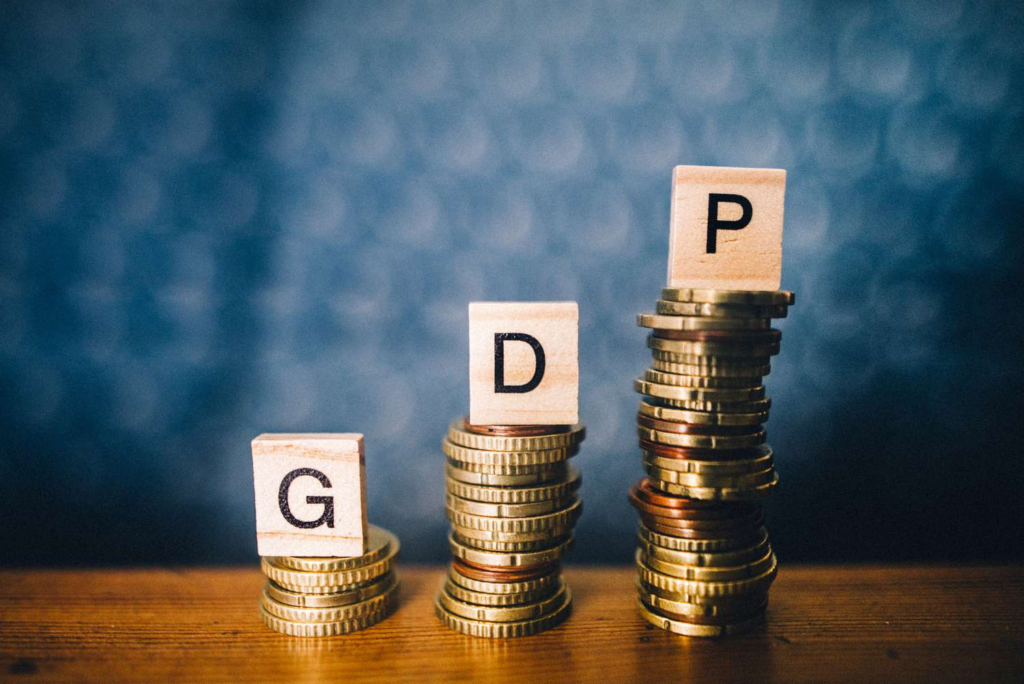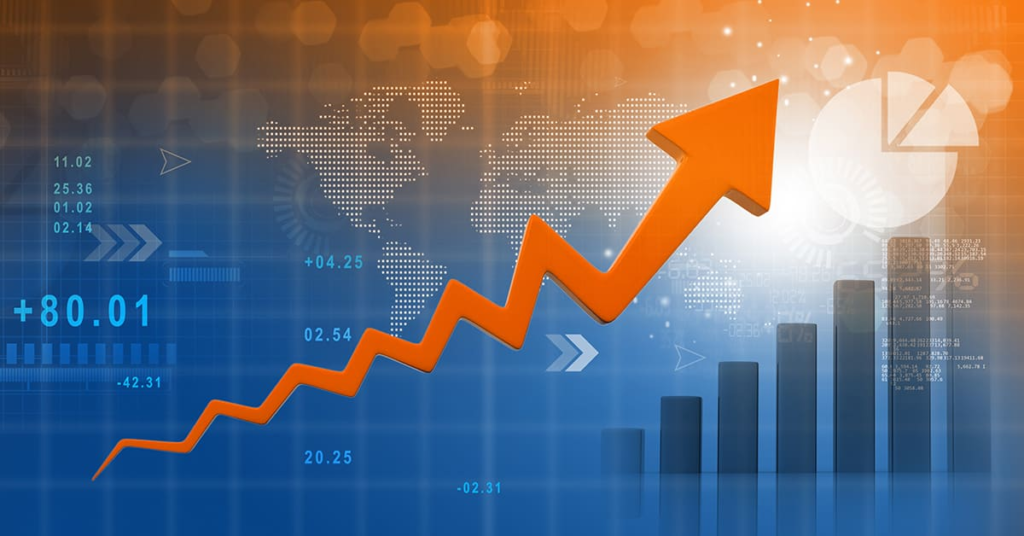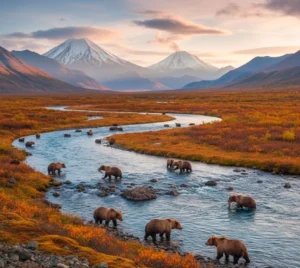Did you know Alaska’s GDP growth has surpassed the national average for the past decade? Over the last ten years, Alaska’s economy has been on a remarkable trajectory, outpacing the national GDP growth rate. With diverse industries and strategic investments, Alaska has emerged as a powerhouse in economic expansion. In Alaska, GDP per capita in 2024 saw a significant increase, reflecting the state’s economic growth. This article will give a detailed overview of Alaska’s GDP, growth trends, and strategies.
Alaska GDP Growth Overview

Alaska’s GDP has shown steady growth, with notable fluctuations due to various economic events. Since statehood, Alaska’s economy has been on an upward trajectory, experiencing a significant increase in the late 1970s with the onset of oil production from the North Slope.
The state has faced recessions, notably in the 1980s, 2009, and 2015. The economy relies heavily on natural resources, government spending, transportation, real estate, and healthcare, with natural resource production contributing significantly to economic activity.
Alaska’s GDP in 2022 was $63,618,000,000, slightly declining over the previous five years. The state’s economy is diverse, with sectors like tourism, seafood processing, and military bases playing crucial roles.
Alaska’s GDP per capita in 2024 is projected to continue its upward trajectory, promising prosperity. Federal spending is a crucial driver of Alaska’s economy, supporting various industries and contributing significantly to the state’s economic landscape.
Factors Behind Alaska’s GDP Surge
Alaska’s GDP has experienced a notable surge in recent years, outpacing national averages and attracting attention on both regional and national scales. Behind this impressive growth lie several vital factors, each playing a crucial role in shaping the state’s economic landscape.
Natural Resource Wealth:
Alaska’s vast natural resources, including oil, gas, minerals, and seafood, have long been a cornerstone of its economy. The state’s oil industry, in particular, contributes significantly to GDP growth, with Alaska consistently ranking among the top oil-producing states in the U.S. According to the Alaska Department of Revenue, oil revenues accounted for over 80% of the state’s unrestricted general fund revenue in recent years.
Tourism Boom:
Alaska’s breathtaking landscapes, diverse wildlife, and unique cultural experiences have made it a top destination for travelers worldwide. Tourism has grown steadily, with visitor spending reaching record highs in recent years. According to the Alaska Travel Industry Association, tourism contributes billions of dollars annually to the state’s economy, supporting thousands of jobs and businesses across various sectors.
Strategic Investments and Infrastructure Development:
Continued investments in infrastructure projects, such as transportation, energy, and telecommunications, have bolstered economic growth and facilitated business expansion in Alaska. The state’s strategic location as a gateway between North America and Asia has also attracted investment in trade and logistics, further driving GDP growth.
Economic Diversification Efforts:
Recognizing the importance of diversifying its economy, Alaska has made concerted efforts to promote growth in non-oil sectors such as technology, healthcare, and renewable energy. These initiatives, crucial for rural development in Alaska, aim to foster innovation and entrepreneurship, cultivating a more resilient and diverse economy. By reducing dependence on volatile commodity markets, Alaska can ensure sustainable growth and prosperity for its rural communities.
Alaska’s GDP Expansion
Alaska’s gross domestic product growth is closely tied to natural resource production, government spending, transportation, real estate, and healthcare sectors. Natural resource production, including oil and gas, is vital in Alaska’s economic activity, accounting for about 26% of the state’s economic output. Additionally, federal spending is a key driver of Alaska’s economy, contributing significantly to the state’s financial landscape. The state’s unique revenue sources, characterized by extreme volatility and high per capita revenues, have also influenced GDP growth.
Alaska’s GDP Success
- Resource Abundance: Alaska’s natural resource wealth, including oil, gas, minerals, and fisheries, drives significant GDP growth.
- Economic Stability: Prudent fiscal policies and a diversified economy contribute to Alaska’s resilience amidst global uncertainties.
- Tourism Sector: Alaska’s stunning landscapes and attractions attract billions of dollars in tourist spending annually, bolstering GDP.
- Infrastructure Investments: Strategic transportation, energy, and telecommunications investments enhance connectivity and economic development.
- Fiscal Responsibility: Alaska’s commitment to sound governance and fiscal responsibility fosters investor confidence and economic stability.
GDP Growth Trends of Alaska
Alaska’s economy has shown fluctuations in GDP growth over the years. In the third quarter of 2023, the state experienced a positive trend with a GDP growth rate of 3.6% per year.
However, job growth in 2022 was sluggish, influenced by ongoing supply chain disruptions. Despite challenges, Alaska boasts economic diversity, with sectors like tourism, seafood processing, and military bases playing crucial roles.
Historically, oil revenues have significantly contributed to Alaska’s economy, representing over 80% of the state’s unrestricted revenue.
Despite setbacks, the state shows resilience and potential for growth, particularly in industries such as oil and gas, tourism, and transportation.
Strategies for GDP Growth
Alaska’s economic development hinges on effective strategies to foster sustained GDP growth. Let’s explore key approaches and initiatives that can drive economic expansion and prosperity in the state.
1. Economic Diversification:
It is crucial to implement measures to diversify Alaska’s economy beyond its traditional reliance on oil and gas. This entails promoting growth in tourism, renewable energy, technology, and healthcare sectors to reduce vulnerability to commodity price fluctuations and stimulate overall economic resilience.
2. Infrastructure Investment:
Infrastructure projects are vital for enhancing connectivity, facilitating trade, and attracting investment. This includes upgrading transportation networks, expanding broadband access, and modernizing energy infrastructure to support economic growth across various state regions.
3. Innovation and Entrepreneurship:
Fostering a culture of innovation and entrepreneurship can spur economic dynamism and job creation. Supporting startups, providing access to venture capital, and offering incentives for research and development initiatives can catalyze innovation ecosystems and drive economic diversification.
4. Workforce Development:
Investing in workforce development programs is essential for ensuring that Alaska’s labour force has the skills and knowledge needed for emerging industries. Collaborating with educational institutions, industry partners, and workforce training programs can bridge skills gaps and cultivate a highly skilled workforce to drive economic growth.
5. Sustainable Resource Management:
Promoting sustainable resource management practices is critical for preserving Alaska’s natural environment while harnessing the economic potential of its abundant resources. Balancing economic development with environmental conservation is essential for long-term prosperity and resilience.
6. Collaboration and Partnerships:
Building partnerships between government, industry, academia, and community stakeholders is essential for implementing effective economic growth strategies. Collaborative initiatives can leverage diverse expertise, resources, and networks to address challenges and capitalize on opportunities for sustainable development.
Conclusion
Alaska’s GDP growth story is marked by resilience, strategic planning, and a diversified economic approach. Over the past decade, the state has consistently outpaced the national average, driven by unique revenue sources, including oil and gas taxes and federal subsidies. Despite economic fluctuations and workforce shortages, Alaska has sustained its growth momentum through initiatives like economic diversification, infrastructure investment, and fostering innovation. By prioritizing sustainable resource management, workforce development, and collaboration across sectors, Alaska is well-positioned to capitalize on its strengths and chart a path toward continued GDP growth and prosperity.
FAQs
What is the wealthiest state in the US by GDP?
The wealthiest state in the US by GDP is California.
Does Alaska have a high GDP?
Alaska does have a high GDP, with a 2018 gross state product of $55 billion, ranking 48th in the U.S.
What is the leading economy of Alaska?
The oil and gas industry dominates Alaska’s leading economy, with more than 80% of the state’s revenues derived from petroleum extraction.
What is Alaska’s primary income?
Alaska’s primary income sources include oil and gas industry revenues, federal subsidies, seafood exports, and tourism. The oil and gas industry primarily contributes to the state’s economy.
What is the Alaska GDP ranking?
Alaska’s GDP ranking is 49th in the United States












